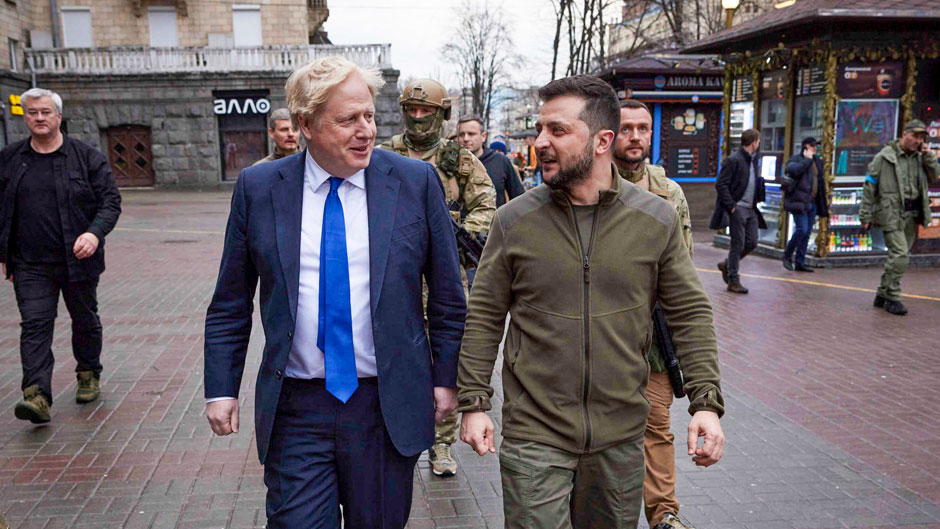While the Greeks defined “krisis” as a “turning point” or “point of change,” crisis seems to have become the static state of affairs of our modern world. All around us are waves of virus contagion, cataclysmic climate events, brutal wars, disruptions, interruptions, and corruption.
So, how do leaders best manage the seemingly unending rage of crises?
“We’re living in a time of hyper turbulence where change is constant,” said Terri Scandura, a management professor and Warren C. Johnson Endowed Chair in the University of Miami Patti and Allan Herbert Business School. Change has become so status quo, she noted, that the business environment has adopted to a large degree the acronym VUCA—volatile, uncertain, complex, and ambiguous—for leading teams, a concept borrowed from the U.S. Army War College, which used it to describe military situations.
“Speed is more important than precision during crisis,” said Scandura, author of the book “Essentials of Organizational Behavior: An Evidence-Based Approach” who also teaches a class on high performance teams. “Leaders need to be able to adapt and decide what not to do. You can’t do everything, so you have to focus and then create plans.”
Those plans include taking ownership and setting Key Performance Indicators—a dashboard of priorities for people to focus on during crisis.
“Leaders should strive to get people to embrace action and avoid punishing mistakes because people have to be able to explore and try new things,” Scandura said. “And finally—and this gets to the heart of behavioral change—it’s critical to communicate frequently, stay on message and remain consistent.”
Scandura also noted the rising recognition of emotional intelligence, which includes the exercise of compassion, as critical for leaders.
“There’s been a revolution in our field in emotions in general and especially in terms of leadership,” she said. “People come to work, and we used to think that they pack their emotions and leave them at home, but that’s not true anymore. There’s a recognition that people have emotions; certainly during times of change they have fear, anger, and anxiety—so there’s been a recognition that emotions in the workplace matter.”
In several forthcoming papers that explore leadership in crisis, Miami Herbert management professor Marie Dasborough and co-author Heath Gregg, a visiting assistant professor in the Department of Management, detailed four types of crisis, each requiring a different type of leadership: external–unintentional crises/leaders as shepherds; external–intentional crises/leaders as saints; internal–unintentional crises/leaders as spokespersons; and internal–intentional crises/leaders as sinners.
Their research reflected on the Ukraine war as an “external–intentional crisis,” which prompted a “leaders as saint” leadership response.
“From this crisis context, the major theme that we derived reflected leaders acting as saints, that is, acting as a beacon of empowerment and support for followers negatively affected by external crises caused intentionally by others,” Dasborough explained.
In facing this type of crisis, these “saintly” leaders provide followers with comfort, support, and hope for the future, she noted. Yet not only do they need to respond to the aftermath of the crisis situation, leaders in these scenarios face the ongoing threat of crises caused by perpetrators who are omnipresent, so their situation is extremely difficult because their own lives or futures are at risk.
Still, whether they are political leaders, community leaders, or frontline supervisors, all leaders facing terrorist acts or wars were observed to support and ultimately empower their followers to successfully navigate the crisis.
“Leaders facing an external–intentional crisis were seen to be more effective when they emphasized a collective focus, ensured continuity between the past and present, and shared a vision of overcoming adversity by rallying against a common enemy,” Dasborough said. “Empowering others is a way that leaders can help followers return to a sense of normalcy, and leaders are especially revered for the support they provided for victims in such a scenario.”
Scandura—along with many others around the world—admits to being “fascinated” by the leadership response of Ukrainian President Volodymyr Zelenskyy to the Russian invasion of the country.
“It’s not his personality traits or his background—it’s the context and his ability to address the values of his followers, to understand their needs,” Scandura said. “Zelenskyy identifies with his followers as fighters; he fights with them, he makes personal sacrifices, he shows compassion and empathy, he understands the hopes and dreams of his people, and he’s trying to deliver against the odds.”
She highlighted that he has modeled, even from before the invasion launched, the ideal behaviors for a leader—to be authentic and real yet simultaneously embodying calm and stability while standing in the storm.
“Leaders have many different styles and personalities, male/female, different ethnicities, but what’s important are the behaviors—to stay calm and keep the message straightforward and simple,” Scandura said. “People look to leaders for stability during change; if they see that the leaders are nervous and anxious, that becomes a contagion effect. So, it’s important for people to be real but not project panic.”
In addition to Abraham Lincoln, Scandura highlighted two of her favorite contemporary leaders: Mary Barra, the CEO of General Motors who has honed a bold vision and committed the company to the manufacturing of electric vehicles, and Reed Hastings, co-founder, chair, and co-CEO of Netflix, who—after Blockbuster opted not to buy the company—pivoted the company to produce content for streaming movies and TV, prompting a revolution in the entertainment industry.
“These are leaders who, rather than seeing an emerging crisis as an event that will end us, they see crisis as an opportunity to create something new and reinvent themselves,” Scandura said.
Dasborough’s newest research has focused on the impact of disasters—natural catastrophes, pandemics and epidemics, mass violence events, and human or technological errors—on both individuals in the workplace and on the organizations themselves.

